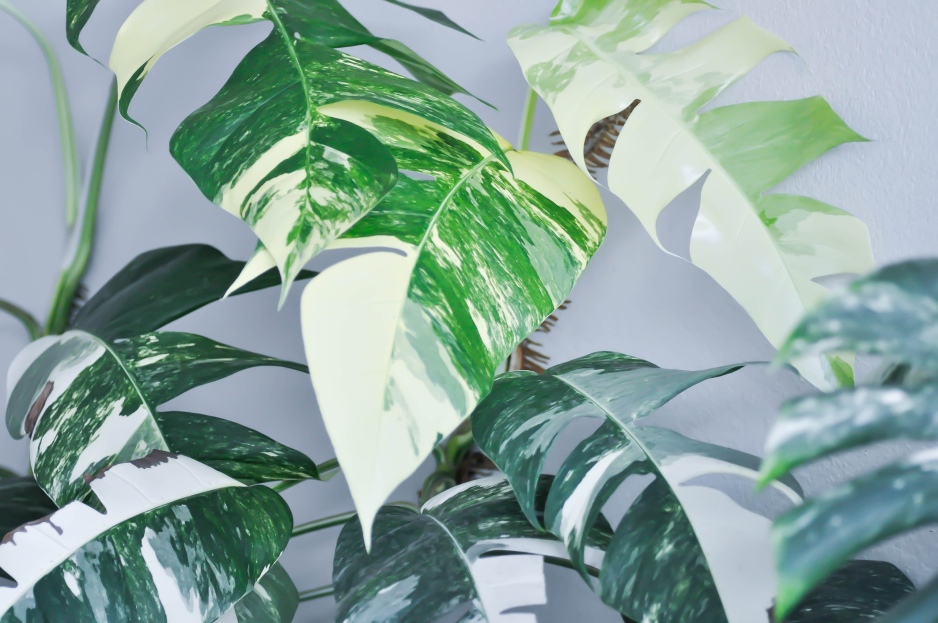
(The Rare Variegated Pinnatum That’s Worth the Hype)
Epipremnum pinnatum ‘Albo’ is a highly coveted tropical aroid known for its elongated, fenestrated leaves marbled with striking white or cream variegation. A cousin to the classic pothos, this plant blends a dramatic vining growth habit with rare coloration, making it a statement piece for any indoor plant collection.
While it shares some similarities with the popular Monstera albo, Epipremnum pinnatum 'Albo' is generally more forgiving and faster growing—a dream for collectors and foliage lovers alike.
Epipremnum pinnatum 'Albo' thrives in bright, indirect light. This is essential for maintaining its beautiful white variegation. Too little light may cause the plant to revert to solid green, while too much direct sun can burn the lighter portions of the leaves.
A spot near an east facing window or filtered light from a south or west window works best. If you're growing it on a moss pole, ensure the light reaches the entire length of the plant to encourage balanced growth.
Water when the top 2 inches of soil feel dry. This plant enjoys a consistent watering routine, but it's better to underwater than overwater, especially due to its variegation, which slows photosynthesis and makes it more prone to root issues.
During active growth in spring and summer, expect to water once a week or so. In winter, allow the soil to dry out a bit more between waterings.
Always ensure the pot has drainage holes to prevent root rot.
Epipremnum pinnatum 'Albo' thrives in high humidity, ideally 60% or above, to support healthy fenestration and leaf development. While it will tolerate average indoor humidity, boosting moisture in the air will help it grow faster and look lusher.
Ways to increase humidity:
Temperature-wise, keep it between 65–85°F (18–29°C). Avoid any cold drafts and keep it away from heaters, vents, or chilly windows.
Use a well-draining, chunky aroid mix to mimic the plant’s natural epiphytic habitat. A good DIY blend might include:
Repot every 1–2 years or when the roots begin to circle the pot. Choose a pot that allows room to grow but isn’t too oversized, as excess soil can retain moisture and lead to root issues.
Feed every 4 to 6 weeks during the growing season with a balanced liquid fertilizer diluted to half strength. A high-nitrogen fertilizer can promote strong leaf growth, while a gentle, complete fertilizer supports overall health.
Avoid fertilizing your plant in winter when the plant’s growth naturally slows.
This is a climbing plant by nature, and it truly shines when given a moss pole, trellis, or plank to grow on. Vertical support encourages larger leaves and faster fenestration as the plant matures.
You can also grow it trailing in a hanging basket, but the leaves will stay smaller and less split.
Prune to maintain size or shape, and to remove any damaged or reverted leaves. You can cut just above a node to encourage branching.
To propagate:
Propagation is easiest during spring and summer.
Like all members of the Epipremnum genus, this plant is toxic to pets if ingested. It contains calcium oxalate crystals that can cause irritation, so keep it out of reach of curious cats and dogs.